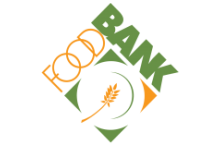One in four children in Oklahoma is at risk of going hungry. Often the only source of good nutrition for these children is during the week at school. Inadequate nutrition has adverse effects on physical health, behavior and mental health, child development and school readiness and achievement. Based on this identified need, the Food Bank started our Food for Kids programming, which focuses on feeding children who are at risk of hunger when out of school. Often these children do not know where their next meal will come from and are dependent on the free or reduced-priced meals they receive at school. Food for Kids programming ensures food-insecure children in our communities have a reliable resource for nutritious meals throughout the year.
The Food Bank created Food for Kids to focus on reaching children and their families at the time when they are most in need: summer, afterschool, at home, and over school vacations. It is a five-part program:
- Backpack Program provides weekly bags of food to students at risk of hunger over the weekends, focusing on elementary and middle school children. Site coordinators work with teachers, counselors and nutrition personnel to identify students most at risk of hunger over the weekend. Children receive nutritious, kid-friendly food to take home on Friday to ensure they have access to food over the weekend.
- Free Family Farmers' Markets provide fresh produce and bakery items to low-income students and their families. The markets serve nine Community Action Project early childhood education sites and three Tulsa Educare schools. Families participate based on identified need from school sites. Fresh produce is vital to the healthy development of young children's minds, bodies, and healthy eating habits.
- Summer and School Break Feeding feeds youth in high poverty areas in the Tulsa metro during summer when students are out of school and during school breaks. Feeding sites serve lunch in low-income neighborhoods at libraries, community centers, parks and nonprofits. Sites are identified with feedback from Tulsa Public Schools and partner programs on where gaps are in summer and holiday food assistance programs.
- School Pantries are located on the grounds of a school to provide more readily accessible food assistance to low-income high school and middle school students and their families. Sites are consistently in the same location on the school's campus, have set distribution schedules and offer ongoing food assistance services.
- Kids Cafe programs provide free meals to low-income kids at community locations during afterschool programming hours - like Boys and Girls Clubs and YMCAs - to reach and feed more children facing hunger.
Last year the Food for Kids programs provided more than 829,000 meals to 18,500 children in our area. This was a 33% increase in meal distribution over the prior year.
